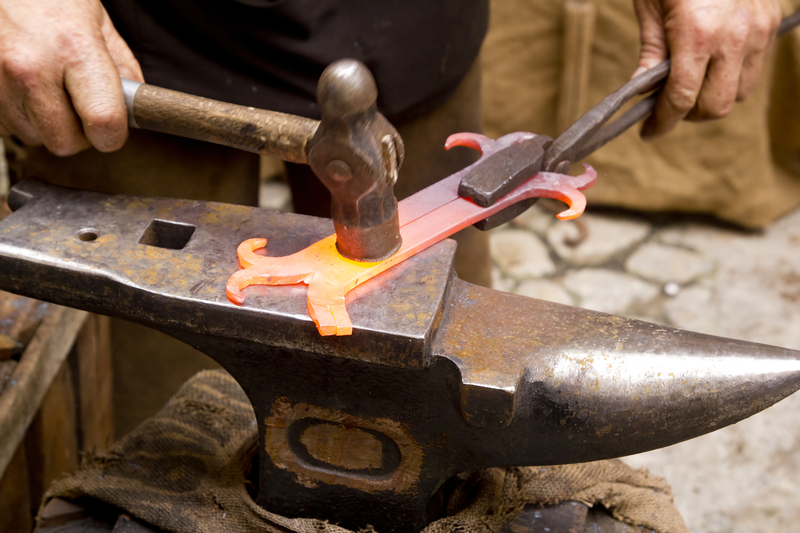There are several differences between the Nordic hammer many of us use and the Japanese version. This includes both the appearance and the function:
The most striking difference between a Nordic hammer and the Japanese style is the shape of the head. The Japanese hammer has the majority of its weight thrust forward to a smaller surface area than the various European styles.
This shape has been used for centuries to concentrate the downward force of each hammer blow. This aids the blacksmith as they fold the three types of steel together to create each sword. These three types of steel are hocho-tetsu (very low carbon), tamahagane (high carbon steel), and nabe-gane (cast iron).
The smaller face of the hammer makes it easier to control hammer blows on the narrow pieces of steel used to make swords and knives. The hammer pictured at the top of the post was forged by a Canadian bladesmith specializing in traditional Japanese techniques.
He forged it from a piece of scrap axle. Its final dimensions are 5 7/8″ long head with a 1 15/16″ face. Sealed in pure tung oil.
What Is the Japanese-style Hammer Suited for?
With its smaller face and forward positioning, it's specifically suited for hammering narrow pieces of metal. Traditional blades made with this style of hammer include:
Katana – the familiar slightly curved sword
Wakizashi – similar to the katana. These two swords worn together signified that the wearer was a samurai.
Tanto – literally: “short blade”
Yari – a straight-headed spear
Naginata – a pole weapon with a curved blade at one end
Tachi – predecessor to the katana
Nodachi – Field sword
Uchigatana – another descendant of the tachi
Have you ever made or used a Japanese blacksmithing hammer? What did you think of it? Share your thoughts in the comment section below!
Article Source: DIY Blacksmithing

Mark S Hickman
Can’t get past the first page to see what it looks like. But says it’s for small thin blades. Wish I could view it.
Sorry to hear that you are having issues. Try this link and it should take you right to the video where it shows how it is made.
http://www.diybullseye.com/this-japanese-hammer-is-a-valuable-addition-to-any-blacksmithing-tool-kit/2/
BD Ghys
Looks like any ball peen hammer will do the job. It’s the hands of the craftsman that does the work!